The booming vegan chocolate market has been driven by small, specialist brands. Can the likes of Cadbury also find the bullseye?
Downloads
-
Focus On Free-from Confectionery
PDF, Size 31.27 mb
In 2013, Siddhi Mehta moved to the Swiss Alps. There, she fell in love with the landscape and the “heavenly food delicacies on offer in every Alpine village”.
The experience prompted her to launch a vegan confectionery brand that reflected the Swiss tempo of life: Rhythm 108 (a number considered sacred by several religions). Carefully crafted by trained chocolatiers and pâtissiers, it aimed to show that vegan products need not be an inferior imitation of their dairy-containing counterparts.
“Just because you’re removing dairy, it doesn’t mean there has to be a compromise,” says Mathilde Jourdan-Gassin, senior marketing manager at Rhythm 108. “Ultimately, it comes back to chocolate making, and that’s a skill that requires a lot of time and effort.”
At the time of its launch, Rhythm 108 was revolutionary. It was playing in a relatively small market, made up a few challengers. But in the past few years, the plant-based boom has made vegan chocolate a hot growth area.
“Plant-based chocolate deserves a space at the head of the table – the demand is there”
From 2020 to 2022, the value of the free-from chocolate category soared nearly 50% – from £37.6m to £55.2m [Nielsen IQ 52 w/e 15 August 2020 vs 52 w/e 13 August 2022]. It is forecast to grow a further 15% in 2023.
This has been enough to persuade giants such as Cadbury, Mars and Nestlé to make inroads into the dairy-free chocolate space over the past year.
So, what does this mean for challengers? Just how much further can the market grow? And can the giants hit the right mark in this specialist category?
There certainly seems no sign of the challenger brands slowing down. Those who spoke to The Grocer told of double-digit – or even triple-digit – increases in value.
Take LoveRaw, for example. It saw 78% growth in 2021 and expects to see “a similar level of year-on-year growth in our sales in the current year” as it invests in innovation.
It’s a similar story at HiP, the oat milk chocolate brand founded by James Cadbury, a descendant of the Cadbury family. Since launching 18 months ago, the brand has branched out from independent stores to the likes of WH Smith travel outlets and Holland & Barrett – and it is now negotiating a nationwide big four listing.
Over the past year, HiP’s sales have doubled, according to Amy Hall, new product development & innovation manager. “We’ve outshone any ideas we had of sales when we started the brand,” she says.
Then there’s fellow oat milk brand Happi, which is seeing retail sales in excess of £1m – and is aiming for £2m this year. That sounds like a realistic goal given its listing in more than 2,600 Tesco stores.
“We launched in lockdown, when people were at home searching for new things, so our launch growth was huge,” recalls founder Gavin Cox. “In a month, we were doing £6k DTC. People have been looking at their lifestyles, and I think the [dairy-free chocolate] category has benefited.”
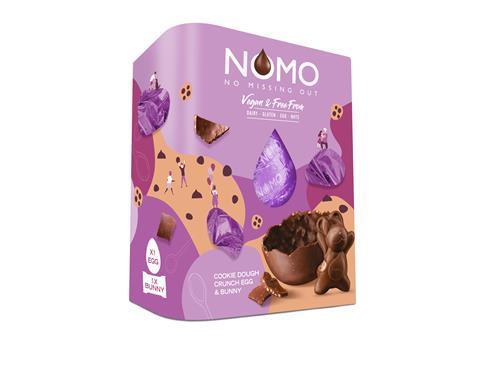
That sentiment is echoed by leading free-from chocolate brand Nomo, which points to the high growth rates in the category since 2020. The brand says it was responsible for 25% of those additional sales.
“The main growth driver has been penetration – £13.1m of the £16.1m year-on-year growth can be attributed to more shoppers entering the category,” says Nomo brand manager Jacqueline Tyrrell.
Broadening demographic
The latter point is crucial. No longer is dairy-free chocolate simply appealing to vegans or those with allergies. An “increasing audience of flexitarian consumers” are buying into the category, says Tyrrell.
That point is backed up by Jourdan-Gassin at Rhythm 108. “Increasingly, we are targeting flexitarians,” she says. “That’s where growth in penetration really lies: mainstream shoppers interested in sustainable living or healthy eating and wellbeing.”
LoveRaw is similarly optimistic about the growth prospects among this demographic. “There’s a growing interest in veganism in the majority of European countries and 50% of the population are set to lead a flexitarian diet by 2025, which means there is still a huge audience we’re yet to reach,” argues co-founder Rimi Thapar.
There are barriers to more widespread adoption, though. While vegans and those with allergies are limited in what they can eat, flexitarians will only buy into the category if the proposition is just right.
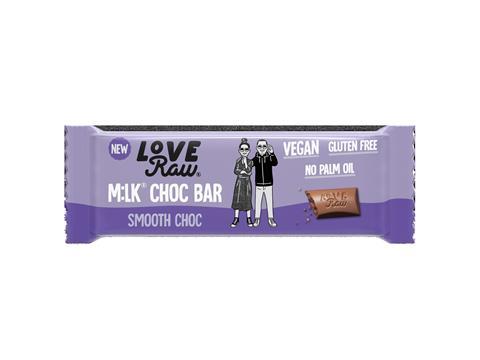
And for now, there are still some negative associations. In a YouGov poll conducted for The Grocer this month, 48% of the 1,993 consumers surveyed said they believed dairy-free chocolate was not as tasty as its dairy-containing equivalent.
This is a perception many dairy-free brands are working to dispel. “The success of the plant-based milk category is clear evidence of the potential for disrupters to grow the market further. We want to disrupt plant-based confectionery in the same way, proving [it] can taste just as good as dairy – with no compromise,” says LoveRaw’s Thapar.
Andrea Jessop, CEO of Moo Free, admits plant-based chocs “often fall down on taste”. As a result, the brand took time to get the taste right. “Moo Free has been spending the past 10 years perfecting its recipes,” she says.
Even if brands successfully overcome taste perceptions, another barrier is price. As many as 60% of consumers in our YouGov survey believed vegan chocolate was more expensive than dairy-containing chocolate.
That belief isn’t unfounded. Many specialist dairy-free brands don’t come cheap. Nomo is priced at roughly £2 for an 85g bar. A 70g bar of HiP comes at £2.99 in Holland & Barrett, which sells an 80g bar of Happi at the same price point.
- Nearly a third of shoppers are either very or fairly interested in trying vegan chocolate, according to a YouGov poll conducted for The Grocer this month.
- However that leaves the majority – 62% – either not very interested or not at all interested. A further 6% don’t know.
- There are plenty of barriers to adoption. Chief among these is price, followed by a perceived inferior taste to standard chocolate.
- However, there are bright spots in the demographic splits. As many as 41% of women have tried vegan chocolate, compared with 24% of men. Women also had more appetite to try dairy-free lines, with 39% expressing an interest.
- In terms of age groups, 25 to 34-year olds were most open to vegan chocolate. As many as 45% said they would be interested in giving it a whirl.
- Meanwhile, the youngest age group in our survey – 18 to 24-year-olds – were most convinced of the benefits of dairy-free lines. Half believed they were better for the planet, and 31% believed they were healthier than dairy-containing chocolate.
- Of the regions, the capital was the most open to vegan chocolate. There, 37% reported trying it and 38% would be interested.
Enter the giants
Even the confectionery giants are struggling to offer a low price point. Galaxy’s vegan bars, which hit the shelves in 2019, are priced at £3 for 100g. Meanwhile, Cadbury’s Plant Bar made its debut in October 2021 at £2.50 for 90g. Kit Kat V was more expensive than the regular version during its trial period.
This doesn’t seem to have hurt sales, mind you. Nestlé announced last week it would roll out Kit Kat V fully across 15 European countries, including the UK, following positive trial results. Galaxy vegan sold £3.1m in 2021 [Nielsen IQ], and Cadbury Plant Bar has made £2.7m [Nielsen IQ 52 w/e 13 August 2022].
“People have been looking at their lifestyles, and dairy-free choc has benefited”
Susan Nash, trade communications manager at Cadbury owner Mondelez, is confident Plant Bar rivals specialist vegan brands on taste. “The bar was developed for over two years at Mondelez’s research and development centre and sees the usual milk ingredient replaced with almond paste. This allows it to retain the creamy taste you expect, while offering a hint of nuttiness,” she says.
This is a vital attribute. As HiP’s Hall sums up: “If the product doesn’t taste nice, they’re not going to be able to compete.”
If they get that right, though, they stand a good shot of attracting the more mainstream consumer. Nomo’s Tyrrell admits their brand power is an advantage. “Brands like Cadbury and Galaxy naturally have an advantage because of their distribution, market penetration and marketing budget,” she says.
However, the mass delisting of vegan Galaxy, Bounty and Topic bars – in Tesco, Sainsbury’s and Morrisons, as The Grocer reported in June – shows it’s hardly a slam dunk. In the case of Morrisons, at least, this was less to do with consumer demand and more to do with a dispute over location.
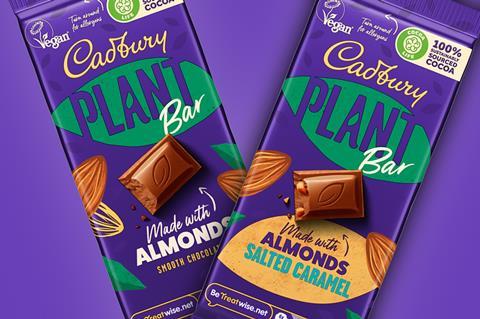
Mars wanted its vegan lines to sit in the free-from aisle. That was a no go for Morrisons, which said they didn’t meet the criteria for inclusion – presumably because they have to include the ‘may contain milk’ disclaimer.
This highlights a wider area of dispute as to whether vegan brands should sit in the mainstream chocolate aisle or dedicated free-from bay. For now, many vegan brands are not made in a specific dairy-free site, so have to carry a disclaimer – and would struggle to justify a position in the free-from aisle. Yet there is a growing move to change that.
“Just because you’re removing dairy, it doesn’t mean there has to be a compromise”
HiP is looking to make its product fully dairy-free, while the Happi brand has moved to a dedicated production site that can guarantee safety for those with allergies. Cox believes Happi sits best in the free-from aisle. “There’s more opportunity because it isn’t dominated by the larger brands,” he says.
On the other side of the argument, some fear vegan chocolate risks being pigeonholed. “Plant-based chocolate deserves a space at the head of the table. The demand is there,” argues LoveRaw’s Thapar.
That sentiment is echoed by Hall at HiP. “It’s outdated, the idea that vegan chocolate has to be in its own aisle,” she says. “The whole point is our chocolate isn’t just for vegans – it’s delicious.”
For Jourdan-Gassin, retailers should invest more in showcasing vegan brands within the main confectionery aisle.
It’s a debate likely to rage on as vegan chocolate grows in popularity. But wherever these products are sited, their sales show no sign of slowing – and the challengers have just as much potential as the giants.
Downloads
Focus ON Free from Confectionary
PDF, Size 31.27 mb
Will confectionery stay visible post-HFSS?
- 1
- 2
- 3
- 4
 Currently reading
Currently readingCan the chocolate giants hit the free-from mark? Confectionery category report 2022
- 5
- 6
- 7
- 8
- 9
- 10


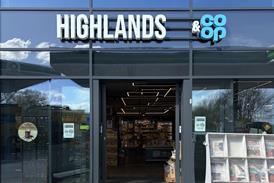
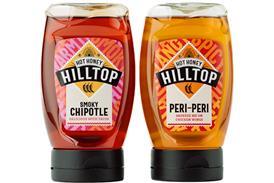
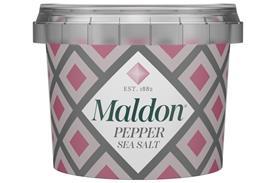












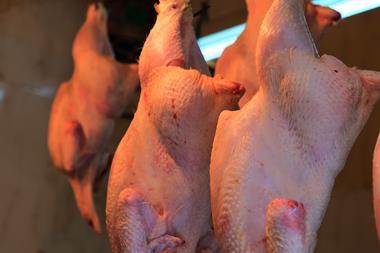
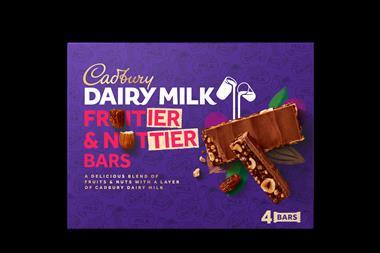
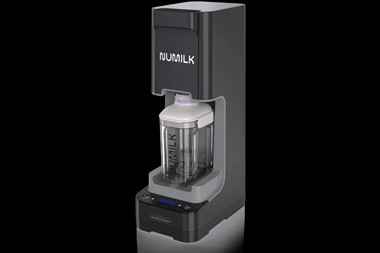

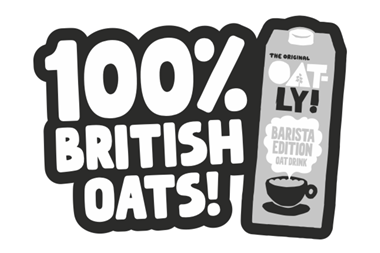



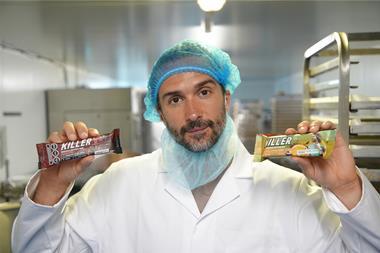



No comments yet